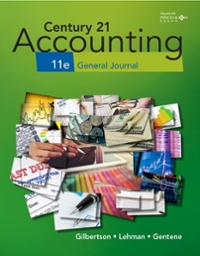Question
1.What is voucher and why it is useful in the recognition/bookkeeping of accounts payable? 2.What is cut-off bank statement? Why it is useful to auditor
1.What is voucher and why it is useful in the recognition/bookkeeping of accounts payable?
2.What is cut-off bank statement? Why it is useful to auditor in cash audit?
3.How Parmalat committed accounting fraud before 2003? How much it cost Deloitte Italy to settle this accounting fraud case? What are the lessons you learn from this European audit failure?
4.Please identify and describe important internal controls over the cash disbursement cycle.
5.Please identify and describe important internal controls over the cash receipt process.
6.Professor Zhang has introduced around 10 tax havens to you. Please identify at least 5 famous tax havens (just list the names). In Parmalat's fraud, which tax haven was involved?
7.Google (actually many US-based multinational firms) uses the "double-Irish" and "Dutch sandwich" tricks to minimize its global tax burden. Professor Zhang has introduced "Double Irish" in class. Please read this article
(https://www.irishtimes.com/business/economy/double-irish-and-dutch-sandwich-saved-google-3-7bn-in-tax-in-2016-1.3343205) and tell me how the "double-Irish" and "Dutch Sandwich" really work? Please list at least 3 nations involved in this tax maneuver.
8.How much is Google's global effective tax rate in 2016 (see article above)? Why effective rate and statutory corporate income tax rate could be different from each other?
9.Client's cash balance per book and cash balance per bank are often different and this difference is mostly driven by timing difference and/or errors. Please list at least 3 factors/drivers which may create timing difference.
10.When auditors audit A/R, they can send either positive confirmations or negative confirmations. Please tell me the differences between those two kinds of confirmations.
11.When auditors send two rounds of A/R confirmations and still receive no responses, audit standards allow them to use alternative audit procedures. Please tell me how to perform alternative audit procedures. Please list at least 4 useful documents.
12.Auditors often use analytical procedures when they perform substantive tests of A/R accounts, please list at least 3 ratios that are useful to auditors.
13.How to review the year-end cutoff of sales transactions? Shall an auditor rely on client's invoices and dates on invoice document? Why or why not?
14.Please tell me the two revenue recognition criteria under the current FASB revenue recognition standard (aka. The old FASB revenue recognition standard or ASC 605 standard) and briefly explain them.
15.Please explain the difference between FOB shipping point and FOB destination and the implication of this difference in revenue recognition (tip: difference in timing).
16.U.S. GAAP requires extensive disclosure with respect to A/R and revenue
6
recognition policies. Please list at least 2 mandatory disclosure items for A/R and briefly explain why such disclosure is useful to users of financial statements.
17.Under the new FASB revenue standard (effective after December 15, 2017, for publicly traded firms in the U.S. or ASC 606), when revenue could be recognized?
18.What are the key supporting documents involved in a credit sale transaction? Which department issue which document? Please list at least 4 documents.
19.When you audit manufacturing firms or retailers, why inventory is often the most vulnerable account that could be subject to high risk of material misstatement? Do you have to worry about inventory account when you audit a local community bank? Why?
20.What are the key supporting documents involved in a credit purchase transaction? Which department issue which document? Please list at least 3 documents.
21.How does the presence of perpetual records affect the audit? (Tip from the professor: Unless there are well-controlled perpetual records, auditing standards require the auditor to observe the physical count of inventory at year-end. If the client has well-kept perpetual inventory records, the observation can correspond to the client's periodic counts if taken during its fiscal year).
22.Company Apex sells its manufactured DVD player to T-mart Inc. The sales price is $10 million and COGs is $8 million. Please show me the different journal entries under perpetual inventory accounting and periodic inventory accounting.
23.Under U.S. GAAP, all 4 inventory cost flow assumptions (FIFO, LIFO, Weighted-Average, and individual identification) are allowed. But IFRS specifically prohibits one cost flow assumption. Please list this assumption here.
24.For manufacturing firms, their inventories should be valued based on the lower of cost or market price. Please explain how to decide the market price? If the cost is higher than the market price, what kind of accounting adjustment a firm should make?
25.In terms of inventory valuation, IFRS and U.S. GAAP are different. Please tell me the difference.
Step by Step Solution
There are 3 Steps involved in it
Step: 1

Get Instant Access to Expert-Tailored Solutions
See step-by-step solutions with expert insights and AI powered tools for academic success
Step: 2

Step: 3

Ace Your Homework with AI
Get the answers you need in no time with our AI-driven, step-by-step assistance
Get Started


